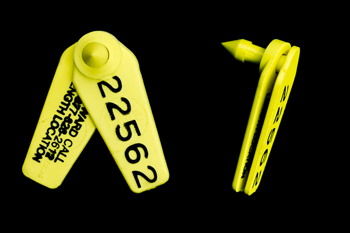The first time I went shark tagging was on a one-week Earthwatch research expedition to Glover's Reef Marine Field Station, Belize. We would set out about 6-10 baited long lines to catch sharks. However, they did not have bait ready to go, it was our job to catch the bait! The scientists taught us handline fishing, which I have never done before. Once the long lines were baited and set, we would leave them in the water for an hour. When we caught a shark while checking our lines, we would pull it to the side of the boat and secure it with a tail rope. Then we would measure pre-caudal length, fork length, and total length. The next step was determining if the shark was a male or female and taking fin clippings for DNA analysis. Lastly, we would set the tag in the base of the dorsal fin. The tags we used are called dart tags, which we had to quickly hit into the skin using a wooden block. Data from these shark tagging expeditions goes directly to Global Fin Print, which is an international team of scientists figuring out why shark and ray populations are diminishing.

Today, our Tropical Marine Biology class went shark tagging with the Guy Harvey Research Institute. After going through the whole process for the first round of lines, I already knew this was much more work than in Belize. We carried out preparing and checking the lines in teams of two with the assistance of other scientists on board. Some of these preparations included baiting the hook, dropping a 50 pound weight to secure the lines, and throwing the bouy into the water with a touch of flare. Just like in Belize, when we caught a shark we kept it in the water with a tail rope attached. The process following securing the shark was almost the same as well. The only difference was the tag type. For these sharks, we used roto tags, which are inserted using a hole punch method into the top of the dorsal fin. It is similar to the tags on the ears of cattle.

Tagging sharks provides scientists with valuable information like population sizes and migration patterns.
https://cnso.nova.edu/ghri/index.html
https://globalfinprint.org/
http://www.wcsgloversreef.org/

Shark tagging was so exciting! It's awesome that you've done it before and this was your second time. I think the different types of tags are interesting. Hey, maybe you'll be going shark tagging for a 3rd or 4th time soon!
ReplyDelete